Canon EOS 5D Mark III Review
Canon EOS 5D Mark III
Why the Mark III is the best 5D model yet...
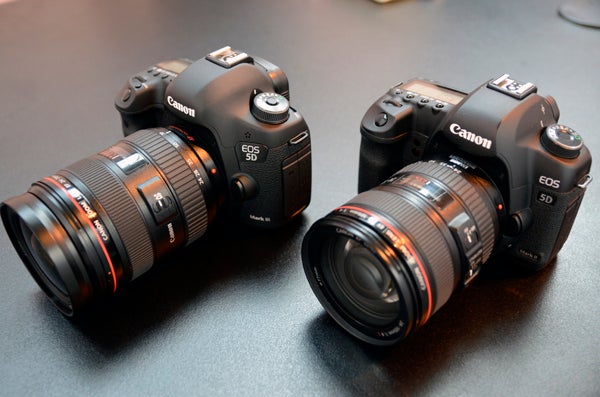
Verdict
Pros
- Vastly improved AF module
- Addition of 'headphones in' socket
- Enhanced ISO range/performance
- Faster DIGIC 5+ processor
- Built like a tank
- Exceptional image quality
- Fantastic video performance
Key Specifications
- Review Price: £2999.99
- 22.3MP full-frame CMOS sensor
- Canon DIGIC 5+ image processor
- ISO 100 - 25,600 (50 - 102,600 in exp. mode)
- 1080/30p Full HD movie recording
- New 61-point AF system (41 X-type)
- 3.2in, 1040k-dot LCD monitor
- Weather-sealed aluminium chassis
Canon has a long tradition of producing innovative and groundbreaking DSLRs. In 2003, for example, the 6.3MP Canon 300D became the first consumer-grade DSLR to sell for under £1,000. Two years later the introduction of the original 12.5MP 5D signalled the arrival of the first ‘affordable’ full-frame DSLR.
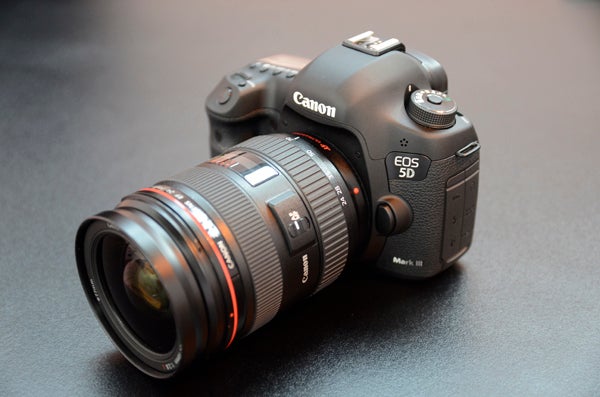
The 5D was replaced by the 5D Mark II in the autumn of 2008, with the new model offering nearly double the resolution (21.1MP) a greatly increased ISO range and, for the first time on a full-frame DSLR, the ability to record Full HD video with an external microphone jack also offering stereo sound recording.
Needless to say the Mark II quickly became a firm favourite, not only with still photographers drawn by its fantastic image quality but also video enthusiasts (and indeed professional film and TV production companies) who were keen to exploit the creative opportunities provided by the Mark II’s class-leading (at the time) video abilities and Canon’s vast lens universe.
Fast forward nearly three and a half years, and we now have the successor to the 5D Mark II – the imaginatively named 5D Mark III. For the time being at least the latest model will sit alongside its predecessor, with prices on the Mark II now as low as £1,200 body-only. The Mark III, however, currently retails for £3,000, and given the high level of demand you can expect this launch price to stand firm for some time yet.
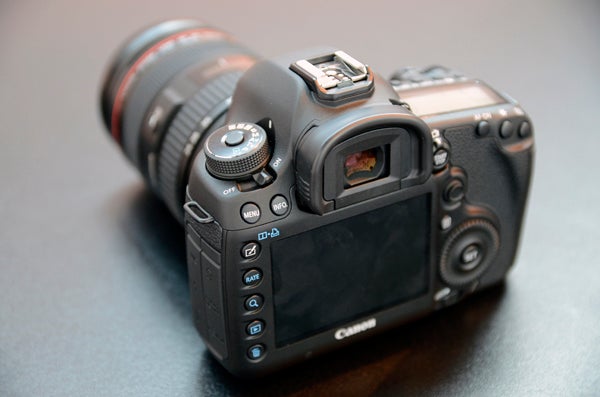
So then given that it costs twice as much, what major hardware upgrades does the Mark III enjoy over its predecessor? Well, for starters the latest model gets an all-new 22.3MP full-frame (36 x 24mm) CMOS sensor that shares the same gapless microlens technology as the flagship Canon 1D X, which allows for enhanced performance in low light. Effective resolution gets a boost too, albeit a fairly conservative one, up to a total of 22.3MP (compared to 21.1MP on the Mark II).
Another major upgrade the Mark III enjoys over its predecessor is its 14-bit DIGIC 5 image processor – the same engine that’s also used in the Canon 1D X. The only major difference between the two models (aside from the £2,300 price differential) is that the 1DX contains two processors while the 5D Mark III gets one. That’s still a lot of processing power, mind. Indeed, Canon claims that the optimised DIGIC 5 processor is 5x faster than the standard DIGIC 5 chip and over 17x faster than the DIGIC 4. Employing an 8-channel readout and 14-bit A/D conversion, the Mark III is able to shoot at a maximum 6fps – up from 3.9fps on the Mark II.
Sensitivity ranges from ISO 100 to 25,600 in standard mode, with ISO 50 to 102,400 available in expanded mode. In terms of high ISO performance, Canon claims that the Mark III offers a 2-stop advantage over the Mark II. In other words, ISO 1600 on the Mark III should produce the same image quality as ISO 400 on the Mark II. We’ll have more to say on the Mark III’s ISO performance later on, but for those looking for a quick spoiler we can reveal that its among the very best we’ve yet seen on a DSLR.
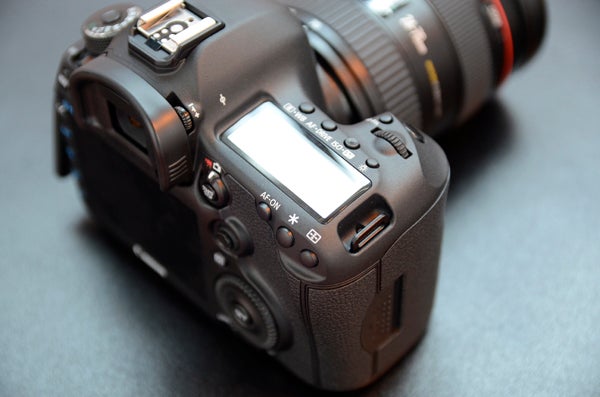
Another big specification upgrade is that the Mark III comes with a total of 61 AF points – as opposed to nine on the Mark II. Of these 41 are cross-type sensors, meaning they are equally as responsive regardless of whether the camera is being held in portrait or landscape orientation. The AF points are arranged in a cross shape (as opposed to a diamond formation) which is primarily concentrated in the central area of the viewfinder.
Exposure modes extend to the regular DSLR quartet of Program, Aperture-priority, Shutter-priority, and Manual, alongside an Auto setting for fully automatic shooting and three user-defined Custom settings. Maximum output at full resolution in the default 3:2 aspect is 5,760 x 3,840 pixels, although there are of course options to reduce JPEG size to as little as 720 x 480 pixels should you be shooting purely for small use on the internet or suchlike. In addition, the Mark III can also be set to record lossless Raw files at one of three resolution settings – Large (5,760 x 3,840), Medium (3,960 x 2,640) or Small (2,880 x 1,920).
While the original 5D didn’t offer any video shooting capabilities the Mark II made history by becoming the first full-frame DSLR to offer 1080p Full HD video recording. Thanks to this (and also to the large number of premium-grade fast Canon lenses) the 5D Mark II has in recent years become the “go-to” model for serious DSLR video enthusiasts and professional-film production houses looking to shoot with a DSLR.

However, with Nikon now deliberately and aggressively targeting the DSLR video market with its full-frame D800, the 5D Mark III was always going to have to up its game to stay ahead. Thankfully, it appears to have done just this. The new model retains the same 1080/24p and 25p Full HD capabilities of its predecessor but also offers 720/50p HD recording, with a further choice of either intra-frame or inter-frame compression.
Continuous AF, stereo sound and external microphone jack are all present and correct and, in addition, the Mark III also gets an external headphone jack so that audio can be monitored in real-time. The Mark III also offers full manual control over audio levels with the ability to make the main control wheel on the back of the camera touch sensitive for silent operation while recording.
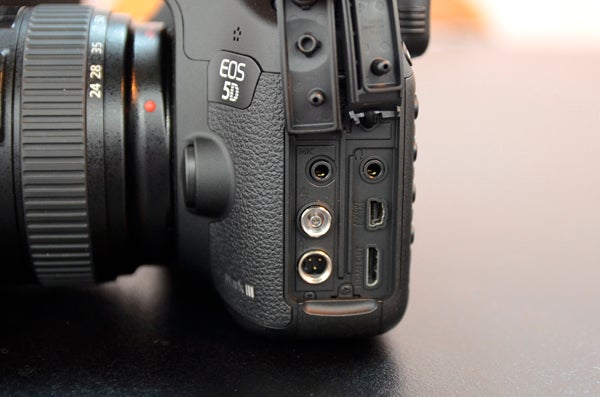
Shooting full-resolution JPEGs you can expect individual images to measure around 6-10MB in size, depending on the complexity of the scene being photographed, while RAW files come out at 63.3MB. Storage isn’t a problem with the Mark III sporting dual SDHC/XC and UDMA compatible CF card slots. It’s possible to use one as an overflow for the other, to use one for stills and the other for video or even to record to both cards simultaneously.
Picking it up for the first time, the initial impression is of a very solid and well-built professional-grade DSLR. On its own the body weighs in at just under a kilo, however with a suitably pro-grade lens attached, such as the Canon EF 24-70mm f/2.8 zoom (as pictured) you’re looking at closer to two kilos. In keeping with previous incarnations of the 5D, the Mark III is protected by an aluminium chassis and fully sealed against dust and moisture, thereby enabling pros and enthusiasts to work in all weathers.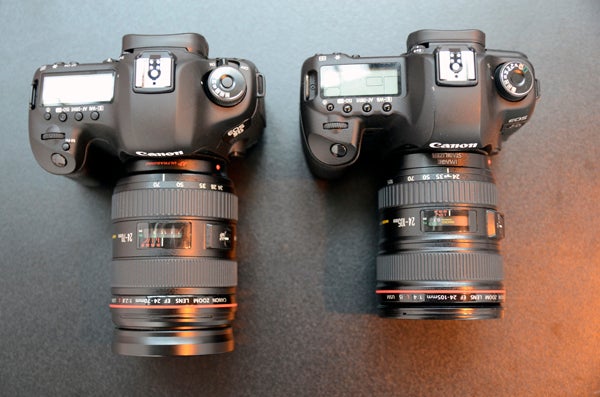
Compared side by side with the Mark II, the new model is a bit taller and deeper and also gets a slightly deeper handgrip. It’s also around 150g heavier. Thankfully the ergonomically designed hand-grip offer ample space to wrap even a large hand around, with a small groove cut into the grip where your middle finger naturally sits, adding some extra purchase. Meanwhile, on the back of the camera a sculpted ridge gives you something to brace your thumb against. Together the grip and thumb rest give you a pretty comfortable and secure hold on the camera, although you’ll still need two hands to support it properly.
This being a pro-grade DSLR the 5D Mark III sports a generous range of external controls and buttons, allowing you direct access to regularly used settings without having to open the main in-camera menu. While the basic button layout remains similar to the Mark II, there are a couple of key differences and additions. For example, the on/off switch is now found behind the exposure mode dial and there’s also a new Multi-Function button next to the shutter release that can be assigned to a range of functions from one-touch Raw recording to activating the camera’s built-in electronic spirit level.
Should you need to enter the in-camera menu you have the choice to either open a Quick menu (accessed via its own dedicated button), or the main in-camera Menu (again via its own button). As might be expected of a professional-grade DSLR options within the in-camera menu are especially deep and wide ranging, with plenty of scope for advanced users to customise a large range of settings to their own individual preferences – right down to the nitty-gritty such as AF tracking speed sensitivity and the like.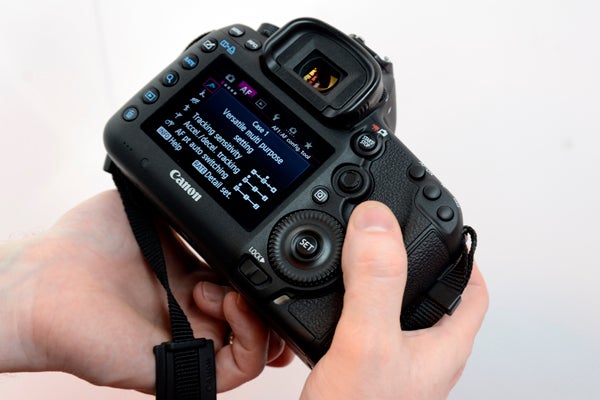
Those photographers who prefer to shoot at eye-level will find the Mark III’s viewfinder pleasingly large and bright, with a 100% field of view and a magnification of 0.71x. In practice it’s a really useable viewfinder that enhances the overall user experience. Should you wish to compose using live view then the good news is that the rear LCD screen has been enlarged to 3.2in (from 3in on the Mark II) and also benefits from an increased resolution of 1040k-dots (compared to 920k-dots on the Mark II).
Helping you to switch more seamlessly between stills and video mode – or indeed live view and optical viewfinder – is another new switch positioned just to the right of the viewfinder. While the camera is being used in stills mode the button that’s inset within this switch can be used to toggle between live view and the optical viewfinder. However, flick the switch over to put the camera into movie mode and the same button will then act as a one-touch record button. Overall, it’s a really neat and intuitive system.
General performance, at least in terms of start-up and processing speed is exceptional. Start-up is instantaneous of course, and processing speeds are also noticeably speedy thanks to the DIGIC 5 processor. The number of simultaneous JPEGs that can be recorded at full-resolution before slowdown occurs is seemingly infinite (we gave up counting after recording over 100 consecutive shots), while in Raw mode it’s possible to shoot around 15-20 (depending on the complexity of the scene the camera is faced with) before the buffer fills and the camera starts to slow down.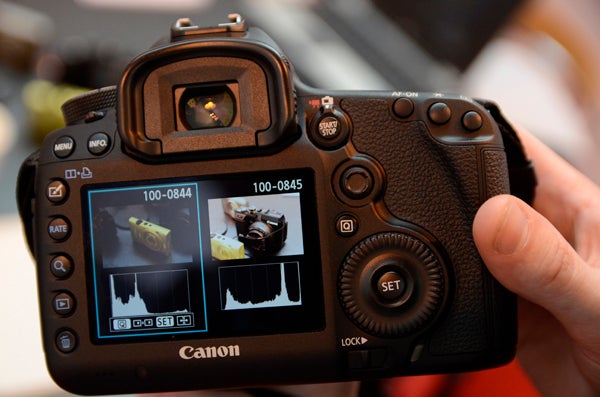
Overall image quality is nothing short of exceptional, with high ISO performance especially impressive. Set to the ‘Standard’ Picture Style setting, the Mark III produces pleasingly vibrant and punchy colour (a trait common to all Canon DSLRs) but without making things look in any way oversaturated or un-lifelike. Of course, you can always choose to tone down the colour, or even to increase saturation levels via the Picture Style sub-menu should you want to.
Paired with the professional-grade Canon EF 24-70 f/2.8 and Canon EF 70-200 f/2.8 zoom lenses the 5D Mark III delivers impressively sharp results. There is perhaps room for little bit of extra sharpening, especially when using the ‘Standard’ Picture Style, although again it’s a fairly simple fix as the sharpness levels of each individual Picture Style can be adjusted to suit your preferences.
At 22.3MP the Mark III is able to resolve plenty of fine detail, from the texture of fabrics being worn by subjects posing for a portrait to the architectural detailing on faraway buildings; if you want to aggressively crop your images post capture then the 5D Mark III gives you the scope to do so. The Mark III also features built-in correction for chromatic aberrations so you can expect fringing to be absent from high-contrast borders. In addition, the Mark III also offers a Distortion Correction feature to lessen the effects pincushion or barrel distortion.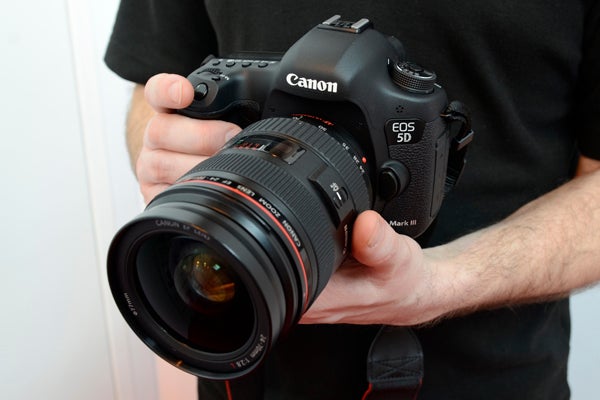
New for the Mark III is an automatic HDR function that can be set to record consecutive images with up to three stops between them, which the camera will then blend together into a single image. In addition, the Mark III also offers Canon’s Auto Lighting Optimizer and Highlight Tone Priority tools should you want to give shadow detail a bit of a lift or increase tonality in the brightest parts of the image.
One area where Canon has lagged behind Nikon in recent years is in high ISO performance. However, with the 5D Mark III, Canon can justifiably claim to have caught up with its main rival. Of course, with a top setting of ISO 25,600 the Mark III can’t go as high Nikon’s flagship D4 (ISO 204,800) however it can match its more immediate rival, the Nikon D800, which also offers a top setting of ISO 25,600.
At sensitivities of up to ISO 1600 noise is almost totally absent from JPEG images. Above this and noise levels are still hugely impressive, with ISO 3200 also offering excellent performance with only the merest hint of softening and then only when viewed at 100% or more. At ISO 6400 this softening increases slightly as noise starts to become more pronounced, although images still remain very useable. At ISO 12,800 there’s a slight loss of colour saturation as noise grain becomes more noticeable. The top setting of ISO 25,600 takes the loss of colour saturation a step further with a further increase in visible grain at the expense of detail. It’s not great and something you’d only really want to use in an emergency, but for ISO 25,600 it’s not at all bad either.
Verdict
The Canon 5D Mark III is a professional-grade full-frame DSLR that builds on the strengths of previous models in the range to deliver a hugely impressive camera that is sure to appeal to video enthusiasts as much as stills shooters. With the recent arrival of the Nikon D800, Canon needed a bit of a showstopper model – with the 5D Mark III, the company has delivered one. At £3000 it doesn’t come cheap, but in cameras as in most walks of life you get what you pay for. If you’re in the market for a pro-spec DSLR that offers excellent handling, fantastic image quality, impressive low-light performance and excellent video abilities then the Canon 5D Mark III definitely deserves to be on your shortlist.

ISO 100

ISO 200

ISO 400

ISO 800

ISO 1600

ISO 3200

ISO 6400

ISO 12,800

ISO 25,600
Stepping out of the studio for a moment, here are some full-sized examples of how the 5D Mark III performs at high ISO settings in a real-world environment. The graffiti is located in a dimly-lit skate park under London’s Southbank Centre.
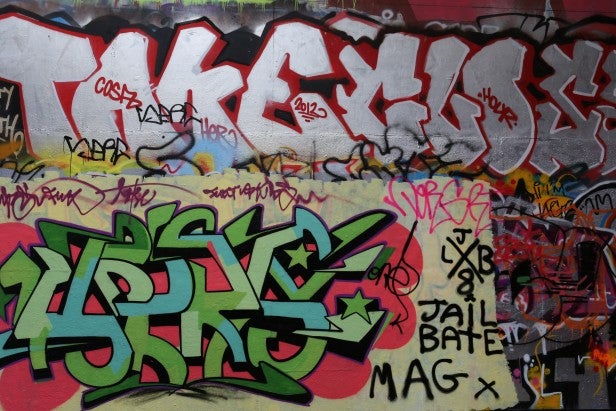
ISO 1600

ISO 3200

ISO 6400
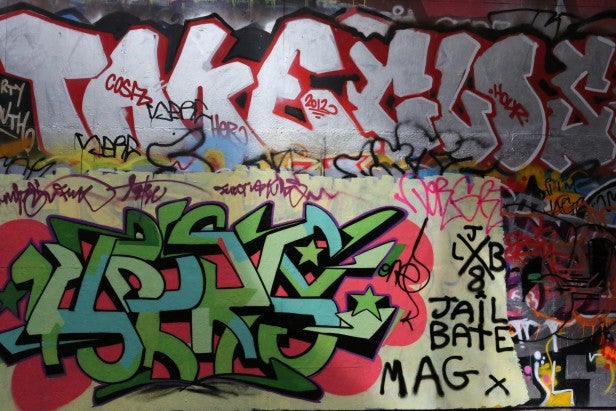
ISO 12,800

ISO 25,600

1/8000sec @ f/2.8, 30mm, ISO 200, AWB
 #
#
1/125sec @ f2.8, 70mm, ISO 640, AWB
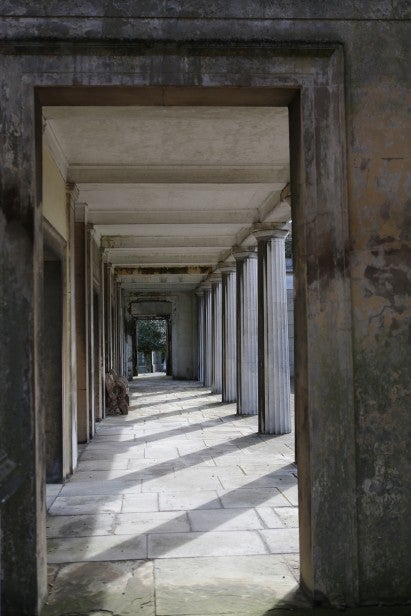
1/11250sec @ f/2.8, 42mm, ISO 250, AWB

1/6400sec @ f/2.8, 52mm, ISO 250, AWB
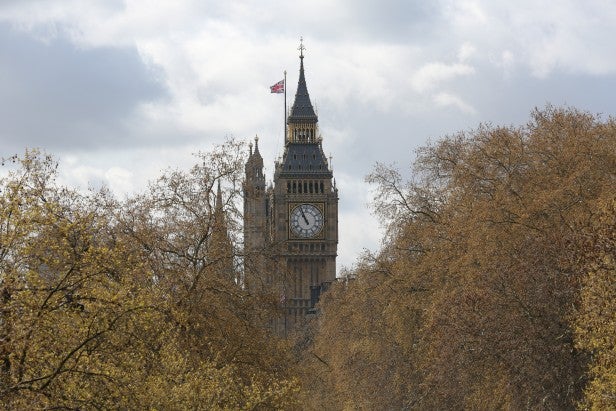
1/640sec @ f/8, 190mm, ISO 200, AWB
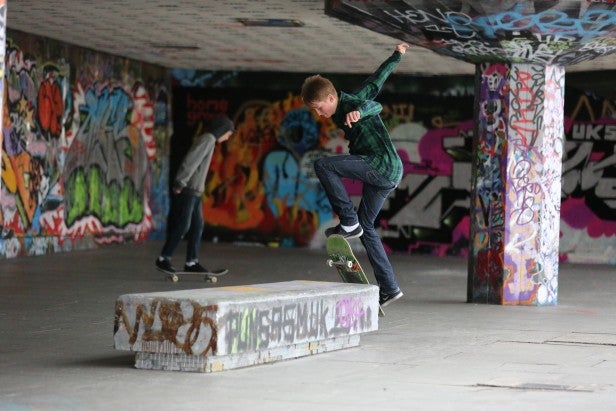
1/8000sec @ f/2.8, 135mm, ISO 6400, AWB
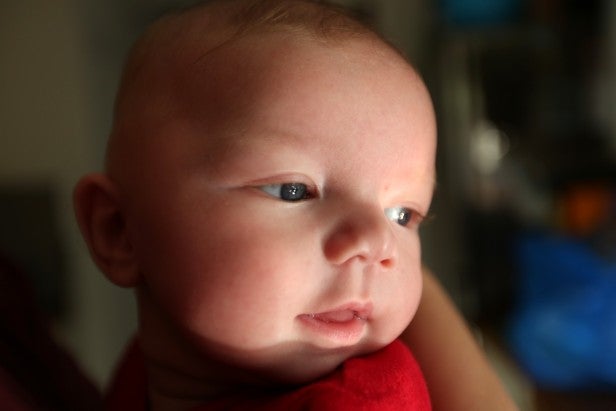
1/400sec @ f/2.8, 35mm, ISO 640, AWB
Trusted Score
Score in detail
-
Value 8
-
Design & Features 10
-
Image Quality 10
-
Build Quality 10

